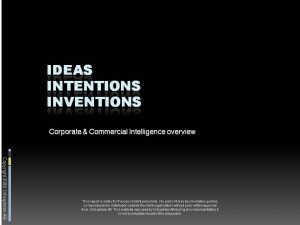
Exclusive Silobreaker Interview: Mats Bjore, Silobreaker
With Google becoming more difficult to use, many professionals need a way to locate, filter, and obtain high value information that works. Silobreaker is an online service and system that delivers actionable information.
The co-founder of Silobreaker said in an exclusive interview for Search Wizards Speaks says:
I learned that in most of the organizations, information was locked in separate silos. The information in those silos was usually kept under close control by the silo manager. My insight was that if software could make available to employees the information in different silos, the organization would reap an enormous gain in productivity. So the idea was to “break” down the the information and knowledge silos that exists within companies, organizations and mindsets.
And knock down barriers the system has. Silobreaker’s popularity is surging. The most enthusiastic supporters of the system come from the intelligence community, law enforcement, analysts, and business intelligence professionals. A user’s query retrieves up-to-the-minute information from Web sources, commercial services, and open source content. The results are available as a series of summaries, full text documents, relationship maps among entities, and other report formats. The user does not have to figure out which item is an advertisement. The Silobreaker system delivers muscle, not fatty tissue.
Mr. Bjore, a former intelligence officer, adds:
Silobreaker is an Internet and a technology company that offers products and services which aggregate, analyze, contextualize and bring meaning to the ever-increasing amount of digital information.
Underscoring the difference between Silobreaker and other online systems, Mr. Bjore points out:
What sets us apart is not only the Silobreaker technology and our commitment to constant innovation. Silobreaker embodies the long term and active experience of having a team of users and developers who can understand the end user environment and challenges. Also, I want to emphasize that our technology is one integrated technology that combines access, content, and actionable outputs.
The ArnoldIT team uses Silobreaker in our intelligence-related work. We include a profile of the system in our lectures about next-generation information gathering and processing systems.
You can get more information about Silobreaker at www.silobreaker.com. A 2008 interview with Mr. Bjore is located at on the Search Wizards Speak site at http://goo.gl/f7niAH.
Stephen E Arnold, November 25, 2013
Phi Beta Iota: We also use SILOBREAKER and recommend it to the US Government, among others. We do not use Palantir (nor will we ever) and we are in the process of disengaging from all aspects of Google. Integrity matters. SILOBREAKER has integrity where others fall short.
See Also:






